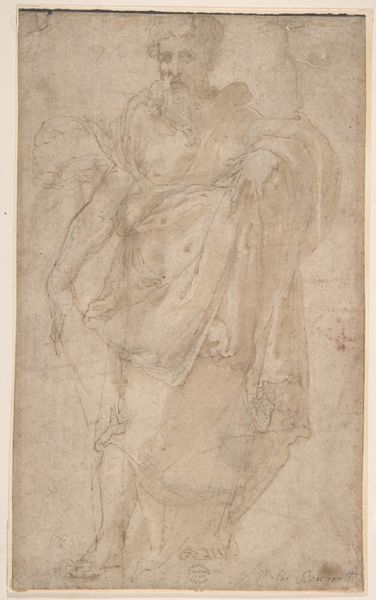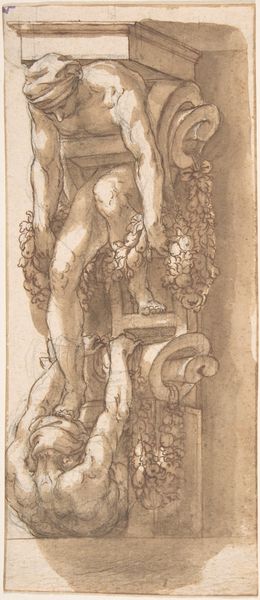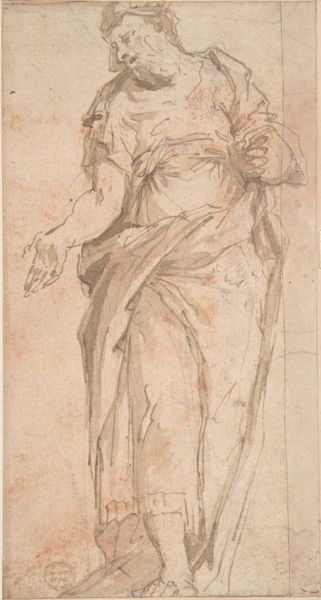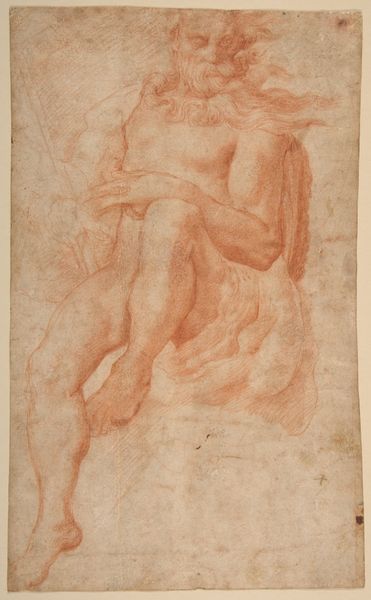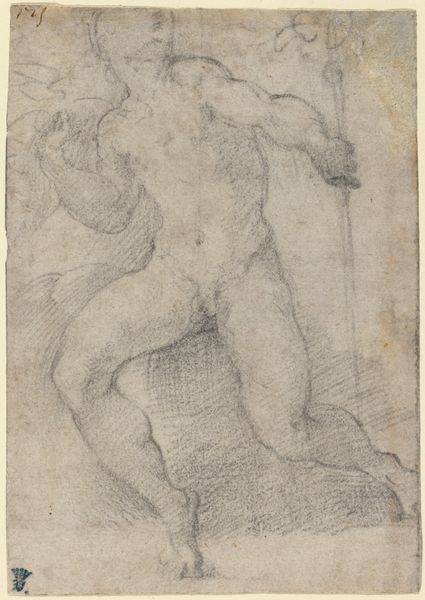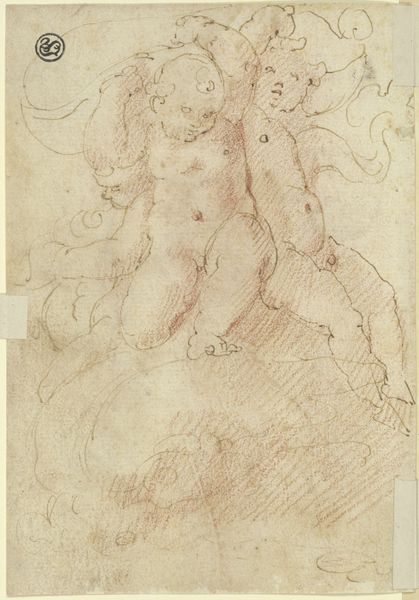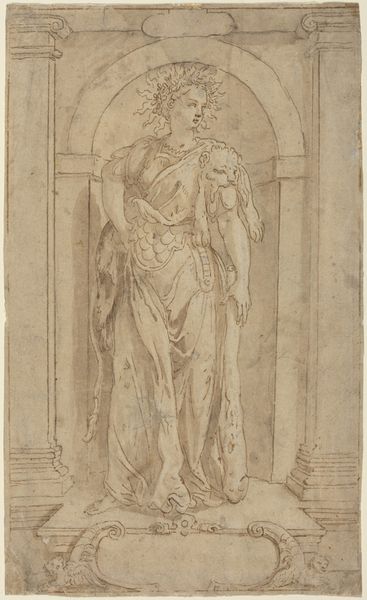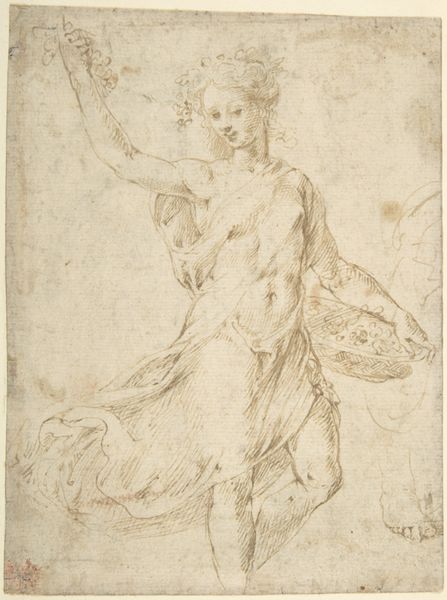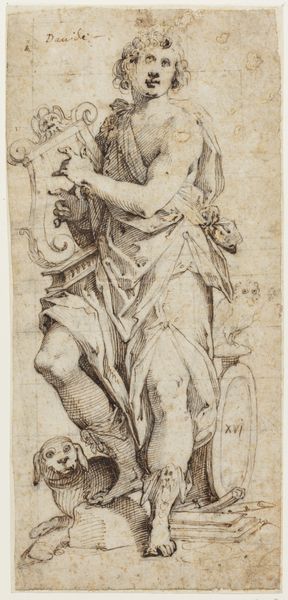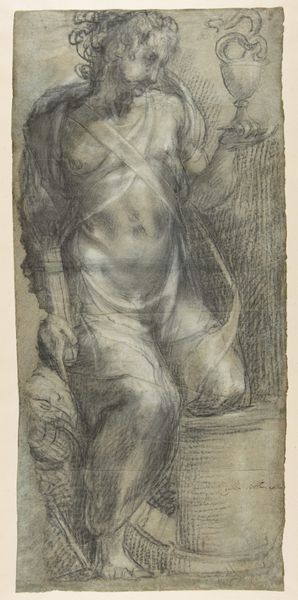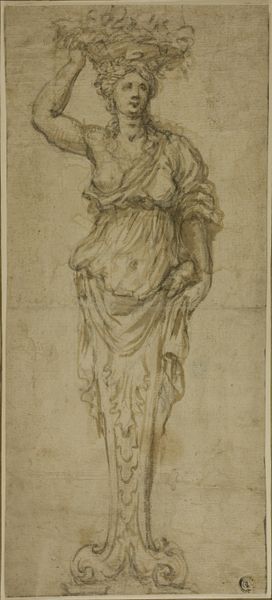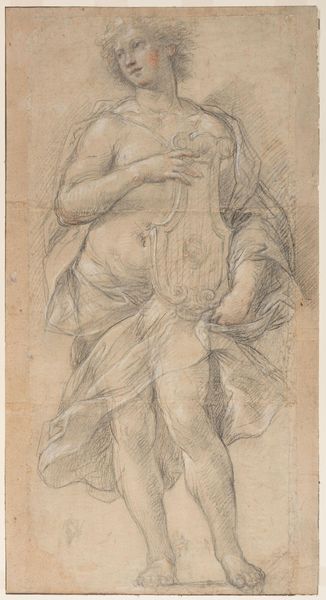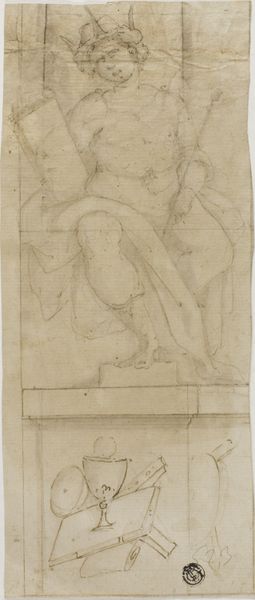
drawing
#
portrait
#
drawing
#
figuration
#
history-painting
#
italian-renaissance
#
nude
Dimensions: overall: 28.7 x 18.4 cm (11 5/16 x 7 1/4 in.)
Copyright: National Gallery of Art: CC0 1.0
Curator: Before us, we have Jacopo di Giovanni di Francesco's drawing, "Allegorical Figure with a Cat and a Pig," created around 1530. It's a beautiful example of Italian Renaissance figuration, rendered in what appears to be pen and ink. Editor: It has a wonderfully raw quality. The lines are quite free, almost frantic, yet they manage to capture a monumental sense of form. The way the hatching defines the volumes of the nude figure is particularly striking, especially next to that somewhat peculiar cat. Curator: Yes, let’s consider that cat and the pig! The drawing is labeled 'allegorical', hinting towards layers beyond mere representation. What's compelling is how these figures probably existed within very particular production cycles; domestic pets living close to artisan workshops where such drawing tools were made, and both representing symbols of the ruling Medici. Editor: I'm intrigued by how the artist uses line weight to create depth. Notice the denser hatching around the figure's torso, setting her forward against the more vaguely defined background, drawing attention to this beautiful central form. But, is the background as 'vaguely defined' as it seems? There is what appears to be the strong lines of architectural detailing in the immediate space. Curator: Certainly, and to expand on your remark about architecture, let’s think about Renaissance Humanism more generally. What does a classical column and pedestal suggest when paired with very visceral bodies – bodies both human and animal? One immediately gets the sense that di Giovanni may have intended something ironic by placing these traditional symbols of governance next to our feline and porcine friends. Editor: Perhaps that's down to my tastes, but these animals contribute to an interesting interplay between idealised form and, to return to where I began, a deliberate sketchiness of line. We, the viewing public, know and understand this technique now, but the suggestion is of ‘preparatory’ studies. It allows a privileged peek behind the curtain as it were, right into the studio workshop. Curator: Indeed, by looking beyond the simple elegance of the nude or its allegorical content, one begins to read this artwork in entirely new ways! We can ask questions about craft production and the availability of art to larger populations. What you call ‘sketchiness,’ may very well speak to something larger about labor, consumption and artistic vision. Editor: Quite right! Viewing "Allegorical Figure" through both lenses allows a rich consideration of technique and material.
Comments
No comments
Be the first to comment and join the conversation on the ultimate creative platform.
